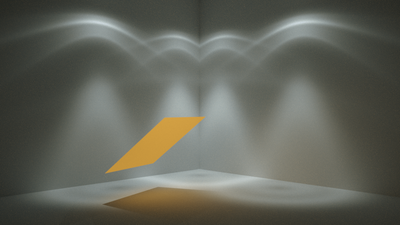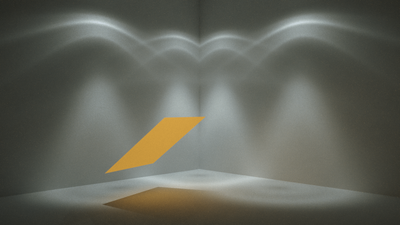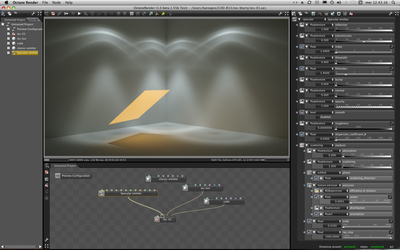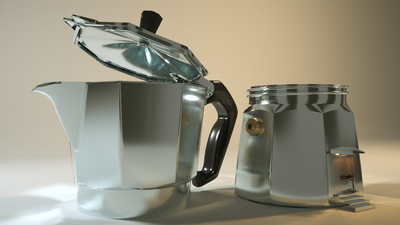dear friends, i was making some test with IES light as you can see here:
http://www.refractivesoftware.com/forum ... 33&t=10579
and i've found that, as expected, small emitters doesn't like the big ones, even cutting the big ones in small pieces doesn't reduce the big noise.
i was already sure that the specular material with the new medium slot has a great potential as the kubo's fog and smoke experiments suggest, so i decided to try it as an emitter instead of the classic diffuse one and the surprise was great


- specular emitter in PT
even if the sample/pixel goes down at the half. the noise is immediately clear after few sample with both PT and PMC and it's possible to render the small lights source more efficently.
since the very beginning. i've found the inefficiency of octane in rendering small and big emitters together a big limitation but now seems that this big problem is gone


- specular emitter in PMC
the trick is to activate the sss in the medium node and activate also the emission one inside it, in my experiment i've set the scattering value to 1 and i've noticed that the transmission value has a great impact in the power of emission.

- specular emitter grab
Here is the scene if someone whant to test it, simply switch from "specular emitter" to "classic emitter" for seeing the difference:
and here is an example of big and small emitters together at 16000 samples, in the classic one the small ies light is full of noise, in the specular version the ies light is perfectly clear but there is some noise in the metal parts that could be easily solved with a downscaled double dimension render.
ciao beppe

- standard emitters, pmc, 16000 sample

- specular emitters, pmc, 16000 sample
P.S. it seems that activating the emission channel in the sss medium node of a diffuse material doesn't do the trick but i must test it a bit more





